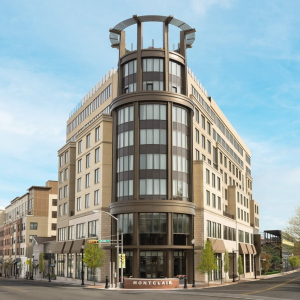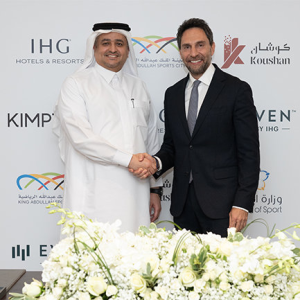The tools available to architects have never been more varied or sophisticated. The constantly innovating world of audiovisual technologies offers architects new tools for creating immersive spaces and achieving their clients’ goals. Steven Upchurch, Managing Director at architecture firm Gensler, and Joel Krieger, Chief Creative Officer at experience design firm Second Story, recently shared their insights with Allison Tardif of AVIXA on what these technologies can do for architects and gave their advice on how to use AV to create spaces that resonate emotionally and also achieve business objectives.
Designers and architects may worry that too many flashy tech solutions could distract rather than complement the other architectural elements in a space. To illustrate, Upchurch points to Gensler’s project, the Cadillac Experience Center in Shanghai, as an example of AV elements that complement a space. The designers used mirrors and glass to reflect the AV elements that created an integrated look and feel.
To tastefully integrate AV into the built environment, Krieger suggested that, “It’s not just about screens, look to the other tools in the toolkit.” Krieger’s favorite example of a more balanced approach is the Fine Arts Museum in Basel, Switzerland, where LEDs were worked into the stonework of the building’s façade in a way that when light casts shadows on the brick it creates subtle text and imagery visible to passersby.
A longstanding challenge of incorporating more AV technology into the built environment has been knowing what AV and content creation professionals to include in the planning process and when to include them. Krieger shared that Second Story is sometimes pulled into a project a little later in the process, sometimes by an AV integration firm or the architecture firm, to help with a technology installation that’s already been defined when they were not in the room. But if they were pulled in earlier, more innovative solutions might have been possible.
When they do have a seat at the table from the beginning, Second Story includes all stakeholders and contributors in their collaboration process, which includes creating rudimentary prototypes in their lab and iterating on the best ideas while improving quality with each iteration. That allows them to avoid assumptions about how something will work and how people will respond to it. Krieger says, “We don’t go away and then show up with a fully formed thing. We treat clients as part of the design team and show them rough stuff. Be comfortable being human and not having a perfectly polished sales pitch.”
Upchurch says, “Everyone on the collaborative team must leave their egos at the door and appreciate all the different contributions needed to make a successful project.” He recommends talking to different vendors before even writing an RFP to get a sense of what is possible within your space and budget. Upchurch explained that it’s important to work collaboratively with all stakeholders early on, citing Gensler’s project for AT&T where they even had to include city officials to make sure the AV design on the exterior would comply with permitting and zoning restrictions. Including all stakeholders can help avoid major pitfalls like creating an installation that needs new content for a client that doesn’t have a plan for producing it. Content developers, whether internal or external to the client organization, are an important contributor sometimes left out of the design process until the end.
The question of how to collaborate naturally leads to a discussion of business goals and return on investment for clients. Krieger believes it’s important to always ask, “Why do digital?” As the experience designer, you never want to be reverse engineering a reason for a big screen that’s already been decided on. He said, “Sometimes we have screens in search of a problem to solve. What is this giant glowing rectangle going to do?” That is why the Second Story team workshops with clients and partners at the beginning of a project to think through KPIs and ROI.
He adds that some of the most interesting goals are also qualitative. For example, how does the workplace make the employees feel about working there? Are they proud, appreciated, connected, and calm and productive? An example of achieving a qualitative goal, to make employees feel connected and appreciated, can be found in Second Story’s project for a Comcast office space. Digital signage embedded throughout the building design gave colleagues opportunities to “shout-out” their coworkers’ achievements.
AV tech is especially well suited to helping clients achieve branding goals and setting the emotional “vibe” of a space. Gensler’s work for the Ferrari Store in London acted like a physical intervention to distract shoppers from their phones and busy schedules and have an experience. The store windows were transformed into digital screens that displayed an animation of what happens to a driver’s heart and brain while driving a Ferrari. This integration of AV tech into the building design evoked exactly the emotion ̶ rushing excitement ̶ that Ferrari aims to achieve in its branding.
When integrated strategically and considered early in the design process, AV technologies have the potential to transform the emotional resonance of the built environment.
[Cadillac house photo] Photo Credit: Gensler





